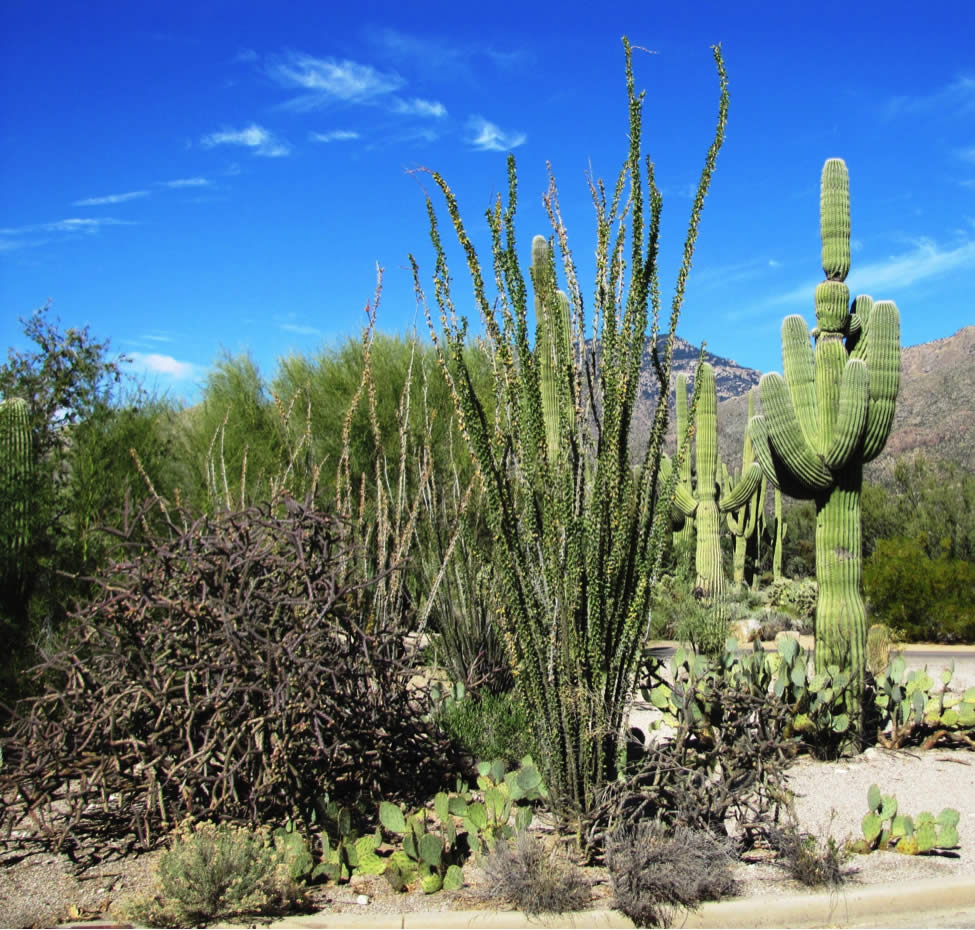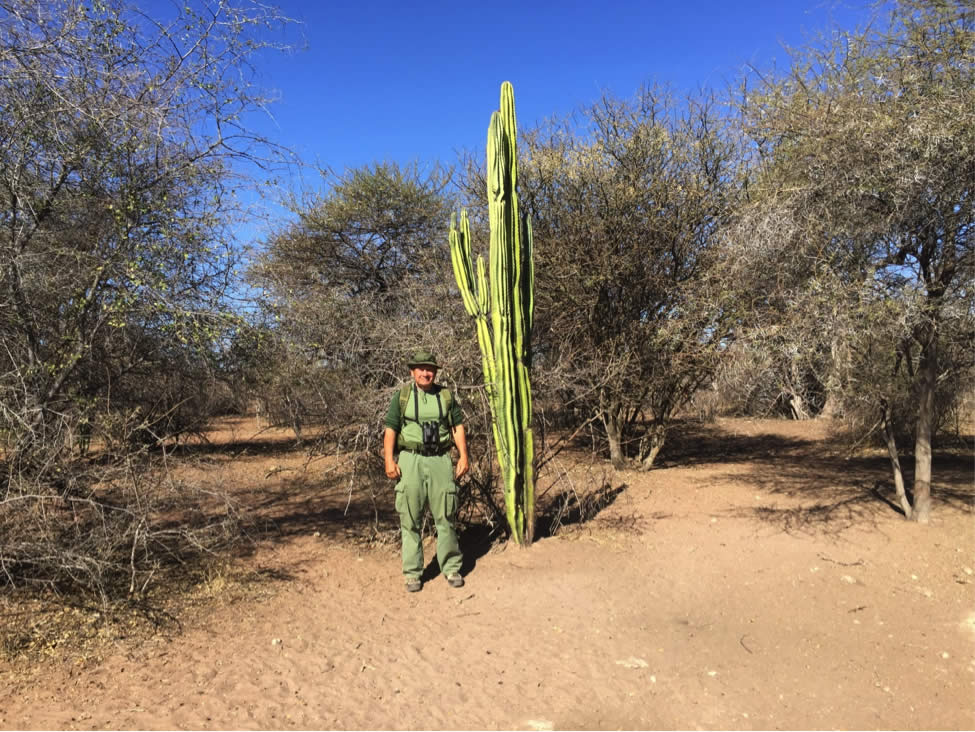“Nothing makes sense in biology except in light of evolution” -Theodosius Dobzhansky, 1973
”It is not the strongest of the species that survives, nor the most intelligent, but the one most responsive to change” -Charles Darwin, attributed
I had the opportunity recently to visit some of the deserts of Africa. Everyone is familiar with the Sahara – which means “great desert” in Arabic – but not aware of the other very interesting sub-Saharan African deserts. Two particularly interesting deserts are the Kalahari, 100,000 square miles in size, covering parts of Botswana, South Africa and Namibia, and the Namib, the oldest desert on earth, with large dunes known as “sand seas” found north west of the Kalahari.

Various cacti in Sabino Canyon, Arizona. Notice the large Saguaro, the prickly pear, and the ocotillo.
I have always been interested in desert plants and their amazing ability to adapt to harsh climates, whether through the variety of defense mechanisms against herbivores, the use of Crassulacean acid metabolism (explained in more detail below) to allow to energy production at night, or the extensive water gathering and storage systems. I was fascinated by the close resemblance of many of the African plants to our own Southwest plants, especially the cacti.

Me standing next to a plant that would be described as a cactus, similar to the Saguaro, but is a member of the Euphorbiacea family, or spurges.
It seems that the close resemblance of the Euphorbia to cacti is an example of convergent evolution. This is when two distinct families, because of environmental factors, develop similar adaptations that give them a selective advantage over other plants trying to survive in the same ecosystem. The presence of spines to defend against herbivory is found in both the cacti and euphorbia, but they are derived from different anatomic structures, demonstrating the power of evolution on structure and function. Both of these families are considered succulent and have members with thick cuticles, low surface to volume ratios, large vacuoles for storing water, and longitudinal ribs that shade the plant from ultraviolet light and longitudinal groves that prevent evaporative water loss. These ribs and groves a can expand or contract to hold water in times of plenty or scarcity thus the term succulent.